







The Camino de Santiago
From May 11 to June 20, 2009 we walked the Camino de Santiago (the Way of St. James).
It is a pilgrimage route that has been used since the Middle Ages. The Camino Francés (one of several paths) begins in the Pyrenees Mountains at the border of Spain & France in Roncesvalles, Spain. It continues west through the foothills and into the vineyards of the Rioja Valley (Spain's famous wine region). From there it becomes the great Meseta (the central plains area), followed by rolling hills and finally the Cantabrian Mountains and the lush green forests of Galicia. The destination of the "Camino" is the Cathedral of Santiago de Compostela; the traditional burial place of St. James, the Apostle of Christ.
The entire route is 790 kilometers (about 475 miles).
| (Part One) | ||
Roncesvalles to the Rioja Valley |
||
| Read our BLAB to learn more about the beginning of our Camino Adventure. | ||
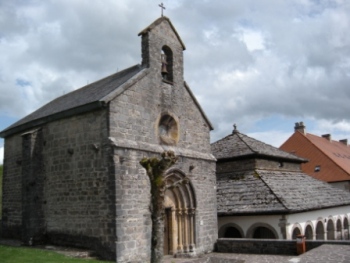 |
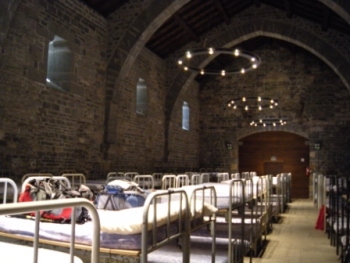 |
|
| When we arrived in Roncesvalles, we found a tiny medieval city of about 10 buildings. We went to the Pilgim's office and received our "credential". It was a passport that we showed at each town to prove that we were pilgrims and were eligible to stay in albergues and receive discounts on lodging and meals. |
We then went to the albergue to check in. Wow! Gothic arches, iron chandeliers- and bunk beds! (Those are our backpacks on top.) All 120 cots were filled that night - women on the right, men on the left and couples in the middle. Lights out at 10PM and then one of the hospitaleros (the men who ran the refugio) began to sing a Gregorian chant - a perfect beginning. | |
 |
 |
|
The next morning at 6 AM, the lights came on and the hospitalero began to chant again while walking through the rows of bunk beds. We were nervous and excited as we got dressed. Was this crazy? Could we really hike that far? It was a beautiful, sunny day with a crisp nip in the air. Perfect hiking weather. |
||
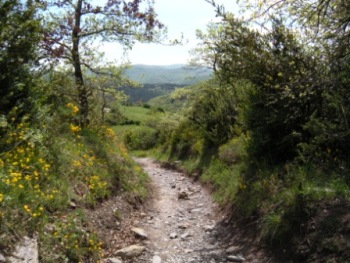 |
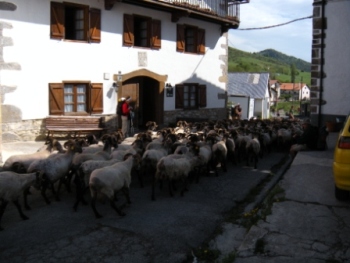 |
|
| The foothills of the Pyrenees were filled with great views, rocky trails and small villages. | We entered Viskarret just as a shepherd was driving his sheep through the town. |
|
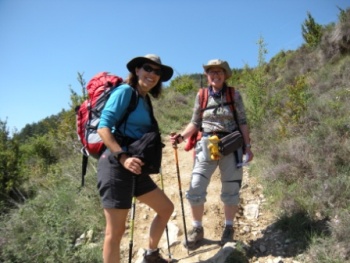 |
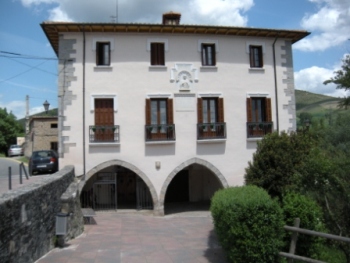 |
|
| People from all over the world were on the Camino with us. Some days we would walk a few kilometers with new friends or meet someone along the way. | The albergue in Arre was really interesting. It was run by monks, had been a monastery and Pilgrim's hospital in the 12th Century and was converted into an albergue in the 17th Century. It still had a chapel and cloister garden (where we hung our wet laundry). | |
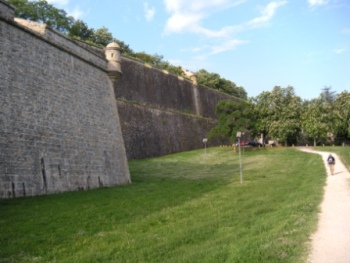 |
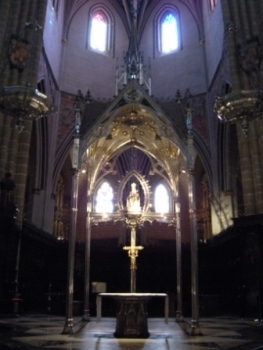 |
|
| Paul looked tiny next to the huge walls that protected the city of Pamplona. |
The Cathedral was open and we were able to spend time in the cool, quiet sanctuary. | |
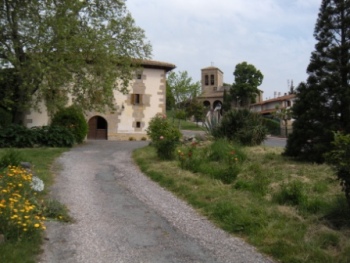 |
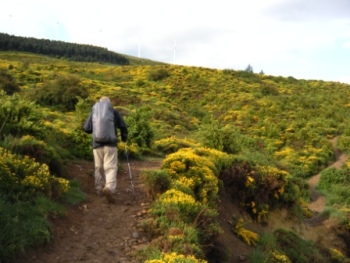 |
|
| In Cizur Menor the albergue was a manor house. It was owned by a wealthy woman who still lived there and allowed pilgrims to stay in an area she had converted into rooms with bunk beds, bathrooms, and kitchen for their use. Her large, shady yard - complete with turtle pond and fountains - had tables and lawn chairs; plus clothes lines! |
It rained overnight and the next day we started up the Alto de Perdon (a 350 m. climb) in mud, winds and rain; but with spring flowers covering the mountain. | |
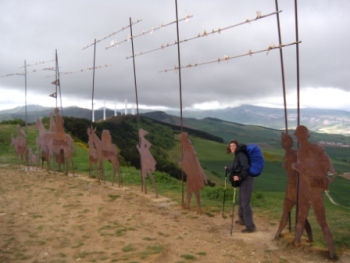 |
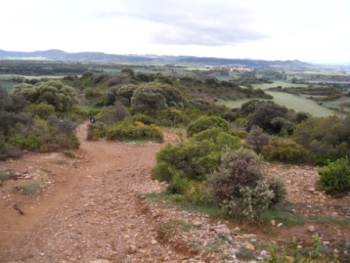 |
|
| When we reached the top, we knew why the crest was filled with windmills. Vicki stopped next to a Pilgrim sculpture. |
Sometimes the right path was hard to spot and we really needed to search for the markers. | |
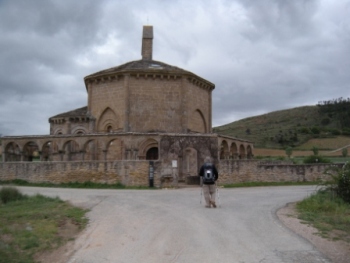 |
 |
|
| The Camino took us to a monastery built by the Templar Knights in Eunate. . . |
and past people working in the fields picking white asparagus. |
|
 |
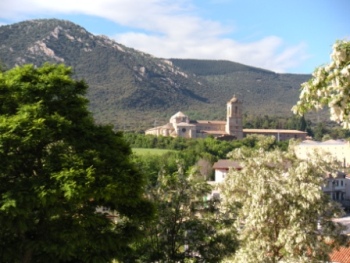 |
|
| It seemed like bright red poppies were everywhere in Navarra. |
The beautiful Irache monastery had a pleasant surprise. . . |
|
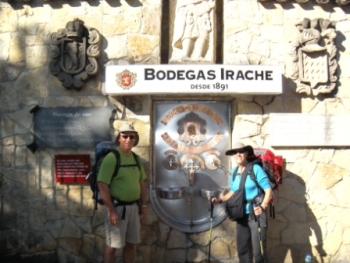 |
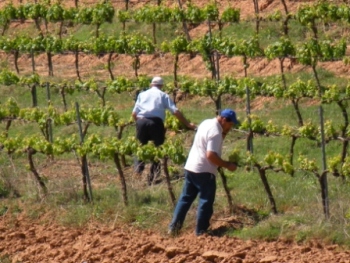 |
|
| Their bodegas had two spigots - one for wine and one for water - free for the pilgrims. |
The vineyards nearby were being prepared for this year's harvest. |
|
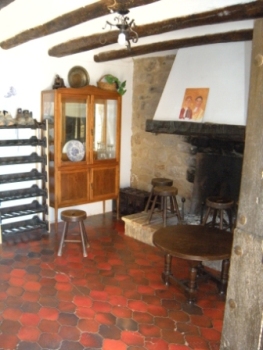 |
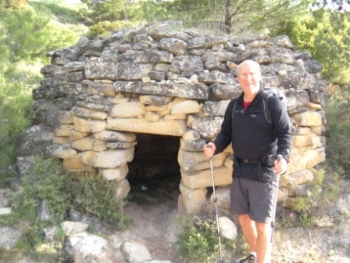 |
|
| We were happy the albergue at Villamayor de Monjardin had a boot rack in the entry way. That kept the little rooms smelling sweeter! | None of the albergues cost much (some were donation only, some cost a few euros per person); but the refugios like this one were free. |
|
 |
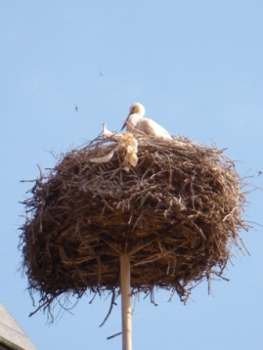 |
|
| Pilgrims stacked stones along the way. Each one represented a prayer. |
Storks were on nearly every column or steeple. | |
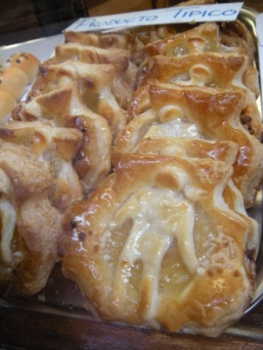 |
 |
|
| In Santo Domingo de la Calzada, they not only had live chickens in the Cathedral; but they also put pilgrims on their pastries! |
In the morning, the snails were thick on grasses and twigs. We saw people with sacks out collecting them. . . | |
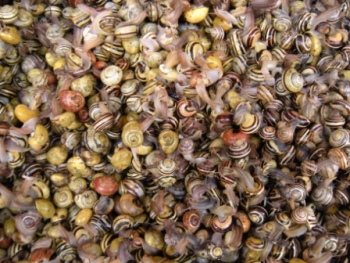 |
 |
|
| and later saw big baskets of them in the markets! | But we chose to eat the artichokes with ham and paella with our Rioja wine. | |